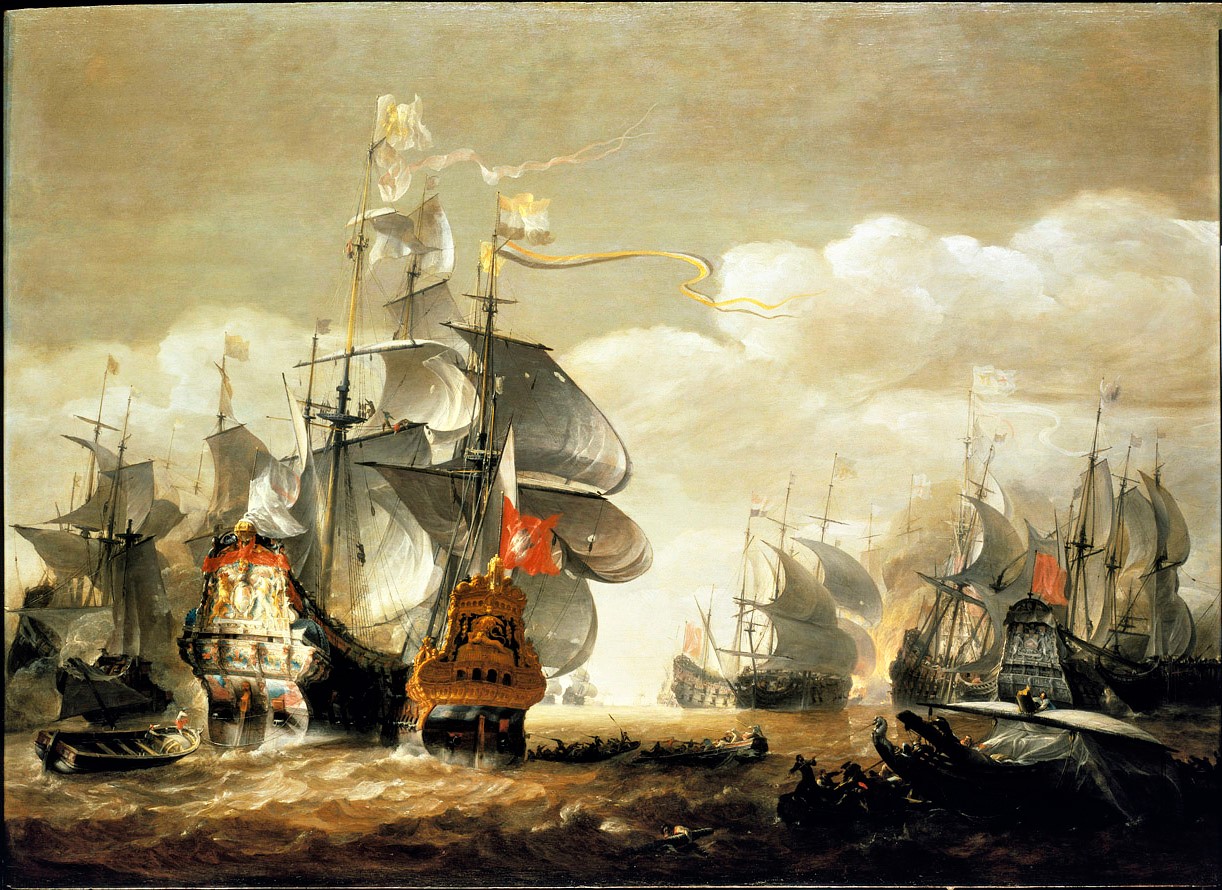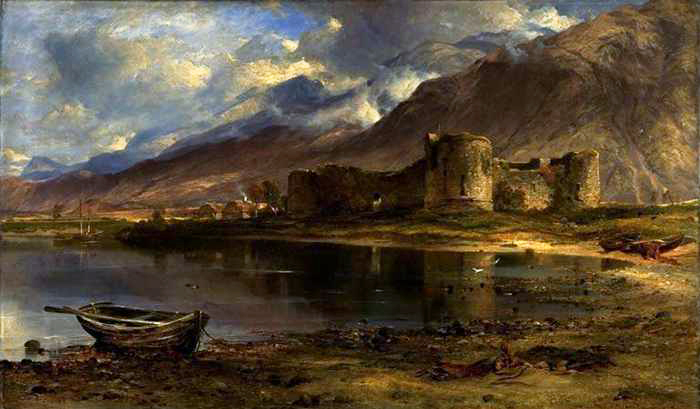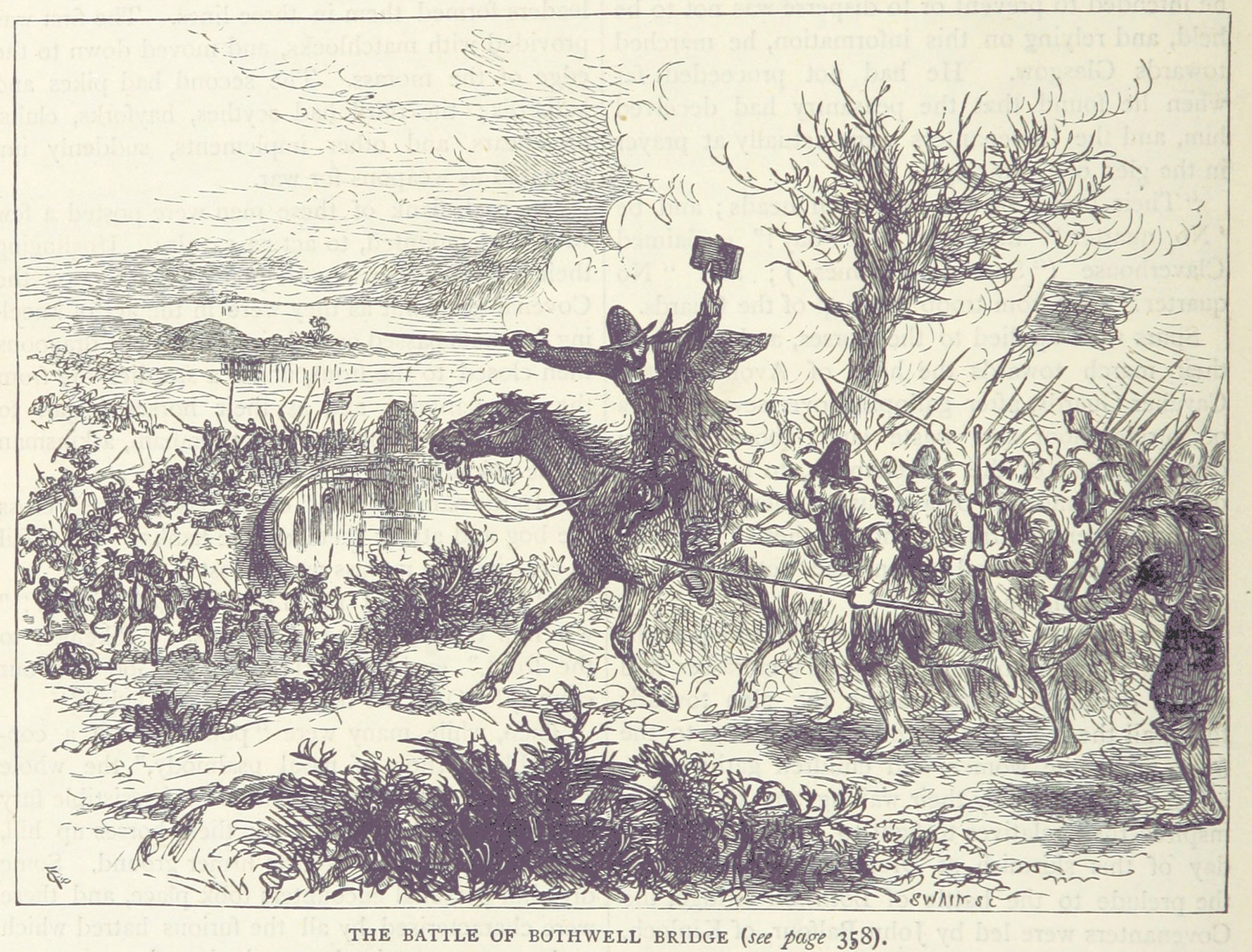|
Elizabeth, Countess Of Falmouth
Mary Bagot, Countess of Falmouth and Dorset, ca. 1664-65, by Sir Peter Lely Mary, Countess of Falmouth and Dorset (1645 – 1679) was a British courtier and mistress of King Charles II. The King rewarded her with grants of land, including Somerset House, in the Strand, and a state pension. She was one of the Windsor Beauties painted by Sir Peter Lely. Her portrait by Lely was erroneously named "Elizabeth, Countess of Falmouth" and also as "Countess of Ossory" in some portrait prints and books in the 18th and 19th centuries, many of which were later reprinted, compounding the error. Family Her parents were Colonel Henry Bagot and his wife Dorothea Arden, of Pipe Hall, Warwickshire. She married firstly Charles Berkeley, 1st Earl of Falmouth in 1663. He died at the Battle of Lowestoft in 1665. She married secondly Charles Sackville, 6th Earl of Dorset Charles Sackville, 6th Earl of Dorset and 1st Earl of Middlesex, KG (24 January 164329 January 1706) was an English p ... [...More Info...] [...Related Items...] OR: [Wikipedia] [Google] [Baidu] |
Mary Bagot, Countess Of Falmouth And Dorset, 1664, By Lely
Mary may refer to: People * Mary (name), a feminine given name (includes a list of people with the name) Religious contexts * New Testament people named Mary, overview article linking to many of those below * Mary, mother of Jesus, also called the Blessed Virgin Mary * Mary Magdalene, devoted follower of Jesus * Mary of Bethany, follower of Jesus, considered by Western medieval tradition to be the same person as Mary Magdalene * Mary, mother of James * Mary of Clopas, follower of Jesus * Mary, mother of John Mark * Mary of Egypt, patron saint of penitents * Mary of Rome, a New Testament woman * Mary, mother of Zechariah and sister of Moses and Aaron; mostly known by the Hebrew name: Miriam * Mary the Jewess one of the reputed founders of alchemy, referred to by Zosimus. * Mary 2.0, Roman Catholic women's movement * Maryam (surah) "Mary", 19th surah (chapter) of the Qur'an Royalty * Mary, Countess of Blois (1200–1241), daughter of Walter of Avesnes and Margaret of Bloi ... [...More Info...] [...Related Items...] OR: [Wikipedia] [Google] [Baidu] |
Windsor Beauties
The Windsor Beauties are a set of portrait paintings, still in the Royal Collection, by Sir Peter Lely and his workshop, produced in the early to mid-1660s, that depict ladies of the court of King Charles II, some of whom were his mistresses. The name stems from the original location of the collection, which was at Windsor Castle. In 2022, they were on display at Hampton Court Palace. A set of copies was commissioned by Robert Spencer, 2nd Earl of Sunderland in the 17th century for his collection at Althorp House, and the complete set can still be viewed there in the Picture Gallery, a room he created to show off his adoration for art. The portraits The Royal Collection includes 10 portraits as part of the set. They show the women at three-quarter length in various poses. Some women wear current fashions; others are draped in loose robes intended to evoke classical antiquity. Originally commissioned by Anne Hyde, Duchess of York, the first mention of the paintings is by Sa ... [...More Info...] [...Related Items...] OR: [Wikipedia] [Google] [Baidu] |
Sir Peter Lely
Sir Peter Lely (14 September 1618 – 7 December 1680) was a painter of Dutch origin whose career was nearly all spent in England, where he became the dominant portrait painter to the court. Life Lely was born Pieter van der Faes to Dutch parents in Soest in Westphalia, where his father was an officer serving in the armed forces of the Elector of Brandenburg. Lely studied painting in Haarlem, where he may have been apprenticed to Pieter de Grebber. He became a master of the Guild of Saint Luke in Haarlem in 1637. He is reputed to have adopted the surname "Lely" (also occasionally spelled Lilly) from a heraldic lily on the gable of the house where his father was born in The Hague. He arrived in London in around 1643, His early English paintings, mainly mythological or religious scenes, or portraits set in a pastoral landscape, show influences from Anthony van Dyck and the Dutch baroque. Lely's portraits were well received, and he succeeded Anthony van Dyck (who had died i ... [...More Info...] [...Related Items...] OR: [Wikipedia] [Google] [Baidu] |
Charles Berkeley, 1st Earl Of Falmouth
Charles Berkeley, 1st Earl of Falmouth (11 January 1630 – 3 June 1665) was an English nobleman and naval officer who was the son of Charles Berkeley (1599–1668) and his wife Penelope née Godolphin (died 1669), of the Bruton branch of the Berkeley family. He served the exiled Stuart court. His uncle, John Berkeley, 1st Baron Berkeley of Stratton, secured Charles's employment with James, Duke of York until the Restoration. He was a cavalry officer and fought in the French and Spanish armies. Charles was subsequently created Baron Berkeley of Rathdowne, co. Wicklow, Ireland, and Viscount Fitzhardinge of Berehaven, Co. Kerry, Ireland, on 1 July 1663. He was created Earl of Falmouth, in the Peerage of England, on 17 March 1664, and Baron Botetourt of Langport, Somerset on the same day. He was promoted Lieutenant-Governor of Portsmouth and was elected MP for New Romney. In 1664 he married Elizabeth Bagot, who as the widowed Countess of Falmouth became a mistress to King ... [...More Info...] [...Related Items...] OR: [Wikipedia] [Google] [Baidu] |
Battle Of Lowestoft
The Battle of Lowestoft took place on during the Second Anglo-Dutch War. A fleet of more than a hundred ships of the United Provinces commanded by Lieutenant-Admiral Jacob van Wassenaer, Lord Obdam attacked an English fleet of equal size commanded by James, Duke of York forty miles east of the port of Lowestoft in Suffolk. Although it was a substantial English victory, the escape of the bulk of the Dutch fleet deprived England of the chance of ending the war quickly with a single decisive victory. As a result, the Dutch were able to make good their losses by building new and better-armed ships and improving their organisation and discipline. Their Dutch fleets would not be so badly organised or ill-disciplined in the remaining battles of this war and, in Obdam's replacement, Michiel de Ruyter, the Dutch had gained a superb tactician and leader for the remainder of the war. Background The Second Anglo-Dutch War resulted from long-standing commercial tensions between England ... [...More Info...] [...Related Items...] OR: [Wikipedia] [Google] [Baidu] |
Charles Sackville, 6th Earl Of Dorset
Charles Sackville, 6th Earl of Dorset and 1st Earl of Middlesex, KG (24 January 164329 January 1706) was an English poet and courtier. Early life Sackville was born on 24 January 1643, son of Richard Sackville, 5th Earl of Dorset (1622–1677). His mother was the former Lady Frances Cranfield, sister and heiress of the 3rd Earl of Middlesex, to whose estates he succeeded in 1674, being created Baron Cranfield, of Cranfield in the County of Middlesex, and Earl of Middlesex in 1675. He succeeded to his father's estates and title in August 1677. He was educated privately, and spent some time abroad with a private tutor, returning to England shortly before the Restoration. Career During King Charles II's first Parliament, Sackville sat for East Grinstead in Sussex. He had no taste for politics, however, but won a reputation at Whitehall as a courtier and a wit. He bore his share in the excesses for which Sir Charles Sedley and Lord Rochester were notorious. In 1662, Sackvi ... [...More Info...] [...Related Items...] OR: [Wikipedia] [Google] [Baidu] |
English Countesses
English usually refers to: * English language * English people English may also refer to: Peoples, culture, and language * ''English'', an adjective for something of, from, or related to England ** English national identity, an identity and common culture ** English language in England, a variant of the English language spoken in England * English languages (other) * English studies, the study of English language and literature * ''English'', an Amish term for non-Amish, regardless of ethnicity Individuals * English (surname), a list of notable people with the surname ''English'' * People with the given name ** English McConnell (1882–1928), Irish footballer ** English Fisher (1928–2011), American boxing coach ** English Gardner (b. 1992), American track and field sprinter Places United States * English, Indiana, a town * English, Kentucky, an unincorporated community * English, Brazoria County, Texas, an unincorporated community * Engli ... [...More Info...] [...Related Items...] OR: [Wikipedia] [Google] [Baidu] |
1645 Births
Events January–March * January 3 – The Long Parliament adopts the ''Directory for Public Worship'' in England, Wales, Ireland and Scotland, replacing the Book of Common Prayer (1559). Holy Days (other than Sundays) are not to be observed. * January 10 – Archbishop of Canterbury William Laud is executed for treason on Tower Hill, London. * January 14 – English Civil War: Fairfax is appointed Commander-in-Chief. * January 29 – English Civil War: Armistice talks open at Uxbridge. * February 2 – Battle of Inverlochy: The Covenanters are defeated by Montrose. * February 15 – English Civil War: The New Model Army is officially founded. * February 28 – English Civil War: Uxbridge armistice talks fail. * March 4 – English Civil War: Prince Rupert leaves Oxford for Bristol. * March 5 – Thirty Years' War – Battle of Jankau: The armies of Sweden decisively defeat the forces of the Holy Roman Empire, in one of ... [...More Info...] [...Related Items...] OR: [Wikipedia] [Google] [Baidu] |
1679 Deaths
Events January–June * January 24 – King Charles II of England dissolves the "Cavalier Parliament", after nearly 18 years. * February 3 – Moroccan troops from Fez are killed, along with their commander Moussa ben Ahmed ben Youssef, in a battle against rebels in the Jbel Saghro mountain range, but Moroccan Sultan Ismail Ibn Sharif is able to negotiate a ceasefire allowing his remaining troops safe passage back home. * February 5 – The Treaty of Celle is signed between France and Sweden on one side, and the Holy Roman Empire, at the town of Celle in Saxony (now in Germany). Sweden's sovereignty over Bremen-Verden is confirmed and Sweden cedes control of Thedinghausen and Dörverden to the Germans. * February 19 – Ajit Singh Rathore becomes the new Maharaja of the Jodhpur State a principality in India also known as Marwar, now located in Rajasthan state. * March 6 – In England, the "Habeas Corpus Parliament" (or "First Exclusion Parliament" ... [...More Info...] [...Related Items...] OR: [Wikipedia] [Google] [Baidu] |
Women Of The Stuart Period
A woman is an adult female human. Prior to adulthood, a female human is referred to as a girl (a female child or adolescent). The plural ''women'' is sometimes used in certain phrases such as "women's rights" to denote female humans regardless of age. Typically, women inherit a pair of X chromosomes, one from each parent, and are capable of pregnancy and giving birth from puberty until menopause. More generally, sex differentiation of the female fetus is governed by the lack of a present, or functioning, SRY-gene on either one of the respective sex chromosomes. Female anatomy is distinguished from male anatomy by the female reproductive system, which includes the ovaries, fallopian tubes, uterus, vagina, and vulva. A fully developed woman generally has a wider pelvis, broader hips, and larger breasts than an adult man. Women have significantly less facial and other body hair, have a higher body fat composition, and are on average shorter and less muscular than men. Thro ... [...More Info...] [...Related Items...] OR: [Wikipedia] [Google] [Baidu] |
17th-century English Landowners
The 17th century lasted from January 1, 1601 ( MDCI), to December 31, 1700 ( MDCC). It falls into the early modern period of Europe and in that continent (whose impact on the world was increasing) was characterized by the Baroque cultural movement, the latter part of the Spanish Golden Age, the Dutch Golden Age, the French ''Grand Siècle'' dominated by Louis XIV, the Scientific Revolution, the world's first public company and megacorporation known as the Dutch East India Company, and according to some historians, the General Crisis. From the mid-17th century, European politics were increasingly dominated by the Kingdom of France of Louis XIV, where royal power was solidified domestically in the civil war of the Fronde. The semi-feudal territorial French nobility was weakened and subjugated to the power of an absolute monarchy through the reinvention of the Palace of Versailles from a hunting lodge to a gilded prison, in which a greatly expanded royal court could be more easily k ... [...More Info...] [...Related Items...] OR: [Wikipedia] [Google] [Baidu] |






.jpg)
